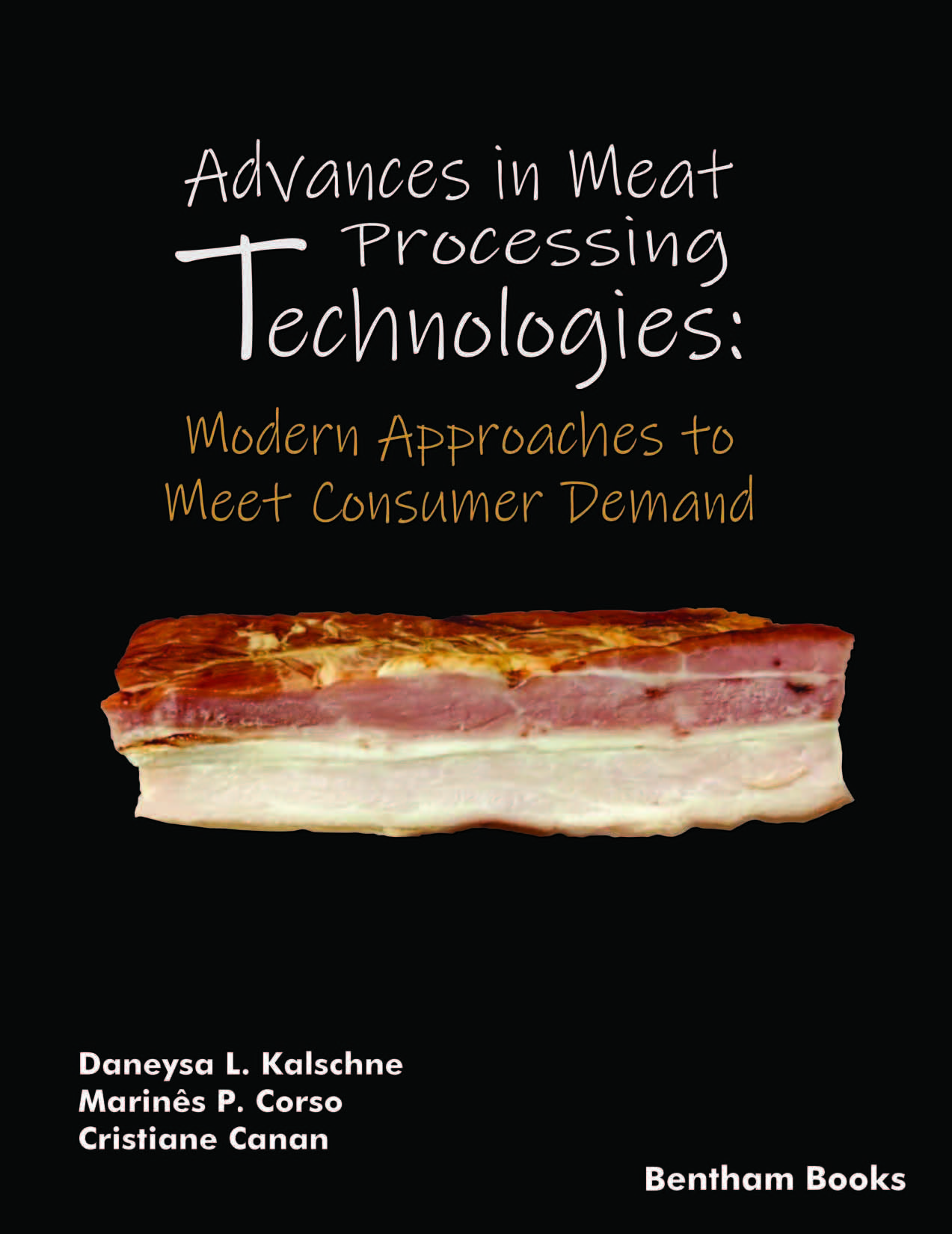Meat and meat-based products play an important role as foods in the diets of a large number of people around the world. However, environmental and social issues have posed a challenge on the world’s meat production, given the new perspectives of conscious production and consumption of products from animal origin. The authors, meat science and technology researchers, felt the need to present in this book new and key technologies that have been studied in order to reduce production costs, minimize environmental impacts and produce safe and quality meat products. Meat and meat-based products comprise a group of foods that raise the social status when consumed since in ancient times, meat obtention was associated with an efficient and wealthy provider in families. The development of meat science and technology brought solutions that have allowed the consumption of meat in its entirety, in a safer and more diversified way, as in the past, slaughtered animals had to be consumed quickly since household appliances such as refrigerators and freezers were either non-existent or not often found in homes. Faced with the need, traditional processes such as salting, smoking, and fermentation have emerged, and, more recently, processes such as emulsification, marinating, and tenderizing of meats, which in addition to allowing conservation, have further diversified meat products. At present, we find a wide range of industrialized meat products readily available in supermarkets. However, we as consumers do not always come to realize the evolving processes in the meat industry, which aim at meeting consumers’ expectations and demands. Besides that, there has been a need for adaptation and modernization of slaughterhouses, as well as the use of more suitable processing technologies, saving water, energy, and reducing waste production. However, these new approaches ought to provide similar or even higher nutritional, sensory, and food-safety levels. Our efforts as researchers and lecturers in the meat science and technology field are not only restricted to our students, this book emerged within this context, aiming at informing students, researchers, lecturers and others who are interested in the subject, about new meat and meat-based products processing technologies. “Advances in Meat Processing Technologies” comprises 9 chapters, the first of which addresses the world panorama of meat production and consumption, highlighting the three most consumed types of meat worldwide - beef, pork, and poultry. Chapters 2 to 7 discuss the use of emerging technologies in traditional meat preservation and diversification processes, including fermentation, emulsification, salting, marinating, and meat tenderization. Emerging technologies studied by several researchers worldwide are addressed in the aforementioned chapters, such as ultrasound, high hydrostatic pressure, pulsed light, ultraviolet light, irradiation, ohmic heating microwaving, radio frequency heating, and quick-dry-slice. Faced with a new trend in the consumption of vegan products, we also have addressed this group of food in a dedicated chapter.
Chapter 8 discusses meat analogues production techniques using alternative protein sources, as well as examples of meat products’ preparation using that raw material. Finally, chapter 9 argues on innovations in terms of additives usage since there has been a rise in the use of natural products by consumers without any chemical additives.
The use of phytic acid to replace nitrite is worth mentioning, being one of the greatest innovations developed by our research group, which has already been patented and mentioned in this chapter, as well as proposals for the use of natural antioxidants, and fat, and salt replacers. This book summarizes a part of our incredible experience working with meat and meat-based products, as well as our passion for the meat science and technology field. We hope that the readers will enjoy reading it and wish you a joyful reading!
CONSENT FOR PUBLICATION
Not applicable.
CONFLICT OF INTEREST
The authors confirm that the authors have no conflict of interest to declare for this publication.
ACKNOWLEDGEMENTS
The authors would like to acknowlegde the following Brazilian financial agencies; Conselho Nacional de Desenvolvimento Científico e Tecnológico (CNPq), Coordenação de Aperfeiçoamento de Pessoal de Nível Superior (CAPES), Fundação Araucária, Universidade Tecnológica Federal do Paraná (UTFPR) and the Post-Graduate Program in Food Technology (PPGTA), and Universidade Estadual de Londrina and the Post-Graduate Program in Food Science by their support in our researches and for this book elaboration. The authors would also like to acknowledge the meat processing plants located in Western Paraná State by the collaboration and partnerships in the recent years, the under-graduate and post-graduate students by their motivation, dedication, companionship, and fun, and Dr Paulo Stival Bittencourt for his support elaborating the Figures section. Last but not least, we would like to thank two wonderful Brazilian researchers, Dr Nelcindo Nascimento Terra from the Meat Technology field and Dr Massami Shimokomaki from the Meat Science field (both in memorian), for their great examples that have encouraged and inspired us throughout our careers and in this book elaboration.
Daneysa L. Kalschne
&
Marinês P. Corso
&
Cristiane Canan
Universidade Tecnológica Federal do Paraná
Department of Food, Medianeira, Paraná
Brazil

